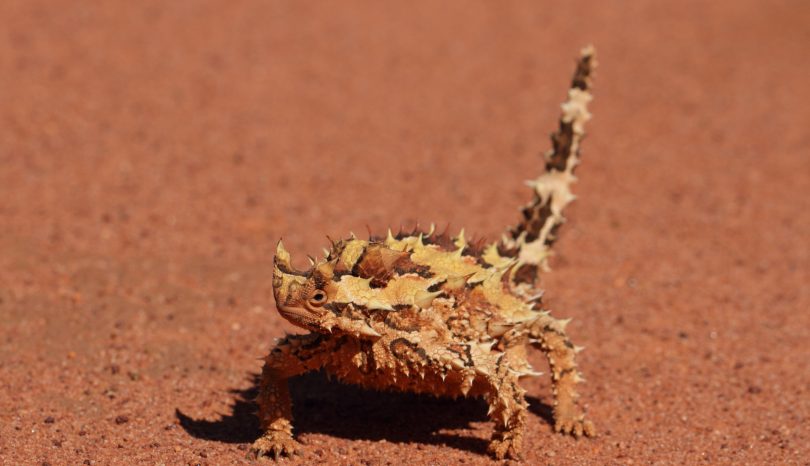Reptiles are cold-blooded vertebrates which usually lay eggs, but in some cases give birth to live young.
The main groups of reptiles are crocodiles, turtles, lizards and snakes. While turtles and crocodiles are restricted to waterways, the arid Australian interior has many species of lizards and snakes.

Australian lizards are very diverse and are divided into several sub-groups:
- Goannas, such as the large carnivorous Perentie (the second-largest goanna in the world) which can grow in excess of 2 metres.
- Geckos, like Bynoe’s Gecko which can reproduce through parthenogenesis (the ability to produce female clones without mating).
- Dragons like the Frill-necked Lizard and the iconic Thorny Devil with its body covered in thorn-like spines and its ability to draw water along any part of its body into its mouth, for example; if it was to place its foot into a puddle, the water would travel along between its scales up its leg all the way to its mouth so it could drink.
- Legless lizards, which have lost their limbs and more closely resemble a snake, except for their very lizard-like head, and the barely visible vestigial hind-limbs.
- Skinks, the largest of which are the omnivorous Blue-tongue Lizards, which give birth to (quite large) live young.
The snakes of Australia have a fearsome reputation, and not without cause. Australia is home to the majority of the world’s most venomous snakes, with the Inland Taipan topping the list. The high toxicity of the venom is due to their diet; while extraordinarily dangerous to humans, other types of animals, such as frogs and lizards which can form the largest part of a snakes diet, are affected by the venom in different ways and the toxicity of venom is in fact adequate for what the snakes eat. However, there are many species of snake in Australia which are not so dangerous, Pythons rarely cause many problems for people (except to scare them), and the Blind Snakes are more like large worms, living mainly underground feeding on insects such as termites and ants.

